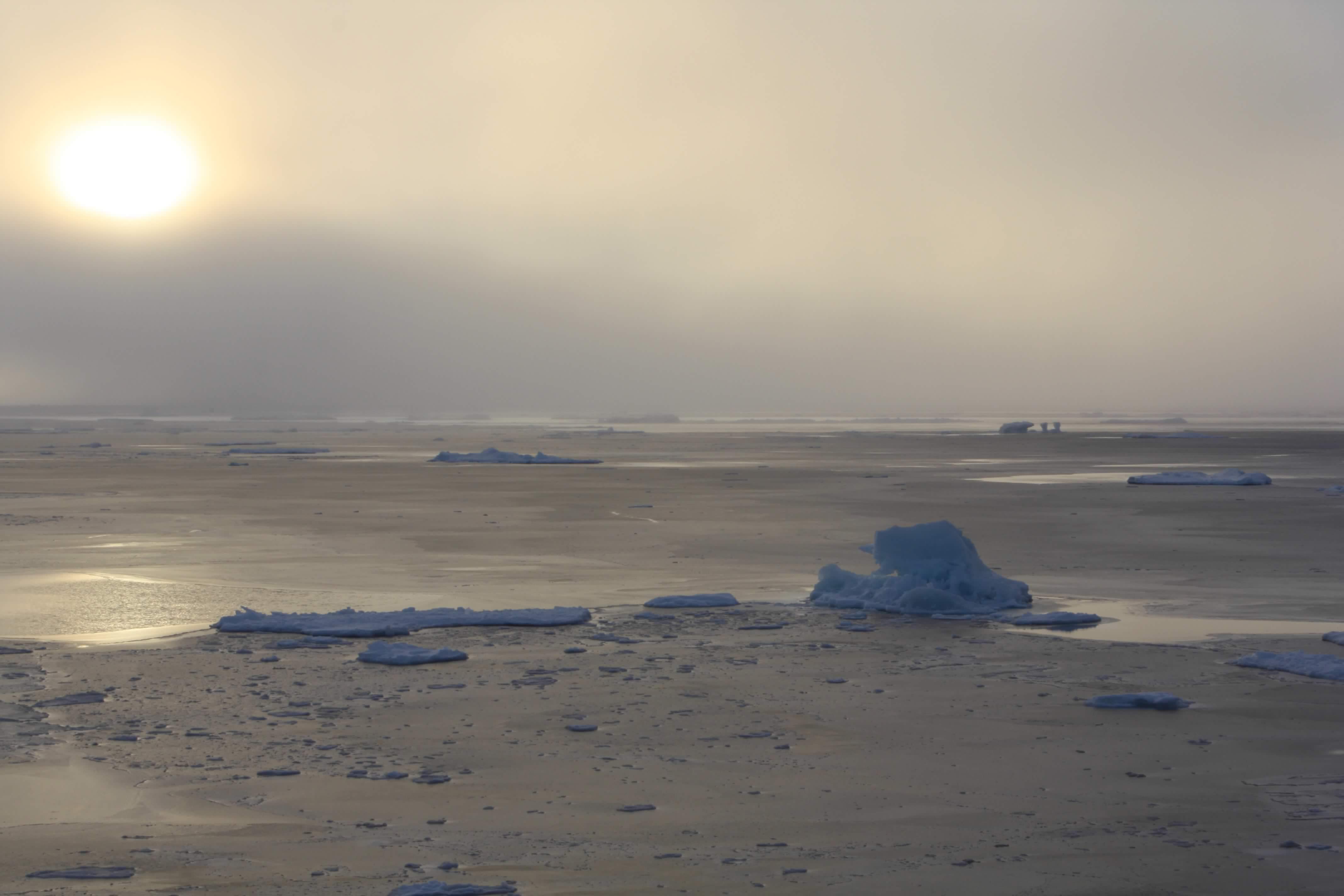By Ola Persson, CIRES/NOAA
Yesterday, we entered the sea ice at about 74.4N, 161.4 W. Today we are traveling through the thin, freezing pack ice towards some thicker floes where some on-ice measurements will be made. The ocean surface is covered mostly by nilas ice, which is thin ice that has recently frozen and that is starting to eject salt from it. These large sheets of nilas ice contain occasional small pieces of older, thicker ice that are mostly covered by snow and often have interesting shapes reminiscent of sculptures.  Pieces of nilas sampled from the side of the icebreaker ranged from 1 cm thick in the morning to 12 cm thick further into the pack ice towards dinner time. Some of that increase was probably because we were traveling further north and some due to the ice growing during the day. The CIRES/NOAA team on Sea State made measurements along the ship track that will be used to determine the energy loss from the ocean to the atmosphere that leads to the freezing of the sea water and hence quantifies the growth of the nilas ice. Other scientists, including Sharon Stammerjohn of Univ. of Colorado/INSTAAR, are making continuous measurements of the heat content of the upper ocean. Throughout the approximately 10 hours of daylight, the landscape was surreal and beautiful, with a sun shining through fog, frequently forming fog bows or cloud bows. These fog bows indicate the presence of supercooled water drops, which freeze on everything since the temperature was well below freezing at -7 degrees Celsius. Frequent cleaning of instruments was necessary throughout the day. A few animals have been seen. A seal and a walrus were spotted swimming in the open water yesterday, and two seals were seen basking on the ice today off in the distance.
Pieces of nilas sampled from the side of the icebreaker ranged from 1 cm thick in the morning to 12 cm thick further into the pack ice towards dinner time. Some of that increase was probably because we were traveling further north and some due to the ice growing during the day. The CIRES/NOAA team on Sea State made measurements along the ship track that will be used to determine the energy loss from the ocean to the atmosphere that leads to the freezing of the sea water and hence quantifies the growth of the nilas ice. Other scientists, including Sharon Stammerjohn of Univ. of Colorado/INSTAAR, are making continuous measurements of the heat content of the upper ocean. Throughout the approximately 10 hours of daylight, the landscape was surreal and beautiful, with a sun shining through fog, frequently forming fog bows or cloud bows. These fog bows indicate the presence of supercooled water drops, which freeze on everything since the temperature was well below freezing at -7 degrees Celsius. Frequent cleaning of instruments was necessary throughout the day. A few animals have been seen. A seal and a walrus were spotted swimming in the open water yesterday, and two seals were seen basking on the ice today off in the distance.
